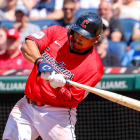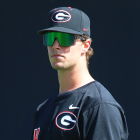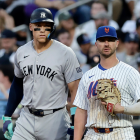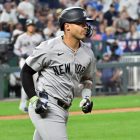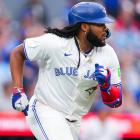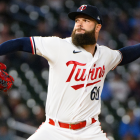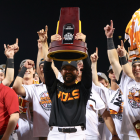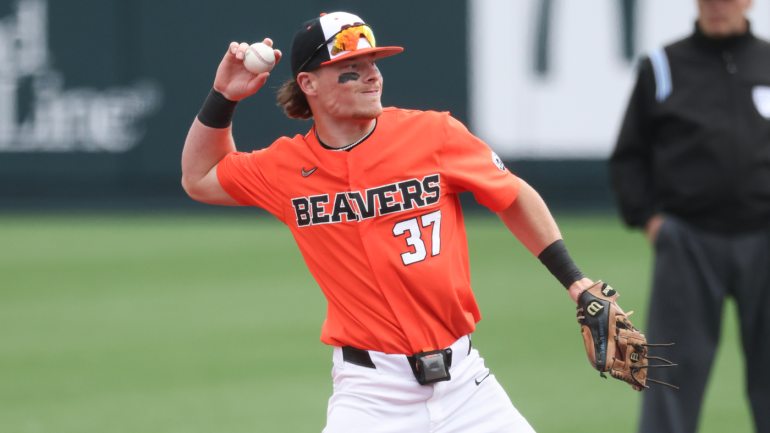
Major League Baseball's amateur draft is now less than a month away. Come Sunday, July 14, the Cleveland Guardians will bring in the All-Star Game festivities by making the No. 1 selection for the first time in franchise history. (The Guardians have previously selected No. 2 on five occasions.)
CBS Sports has already begun the process of analyzing the class. Last week, we published our first mock draft and our final top-30 rankings of the cycle. As part of those processes, we talked with a number of scouts, analysts, and directors who provided some insight into the class and emergent trends.
We decided to publish four of the most notable insights we gleaned from our collection of insiders, including who might go No. 1 and why chaos could reign supreme in the middle to late stages of the first round. Let's get to it.
1. Bazzana still favored at No. 1
We reported in February that other teams believed the Guardians were smitten with Oregon State second baseman Travis Bazzana. The ensuing four months have changed nothing on that front. How could they have? Bazzana had a phenomenal year, batting .407/.568/.911 with 28 home runs, 16 stolen bases, and 40 more walks than strikeouts. He continues to earn above-average grades for his strength and his speed, and he's displayed an appreciable feel for the barrel and the strike zone. In short, he seems to check a lot of the boxes that the Guardians in particular like to see checked.
He battled and it went fair!
— Oregon State Baseball (@BeaverBaseball) June 2, 2024
Live on ESPN2.#GoBeavs pic.twitter.com/1g7TvexeJS
While no one denies Bazzana's merits, he has inspired philosophical debates about the importance of physical projection. The evaluators we spoke with believed that he's already maxed-out, meaning he's unlikely to improve his physicality in a tangible sense; what you see is what you get. At the same time, Bazzana receives as much praise for his makeup as anyone in the class. There's a real belief that, if there's an adjustment to be made, he's going to make it. Everyone has a different preference on the ideal combination for an incoming player, and the clash present in Bazzana's profile makes for an interesting dynamic and some ranging opinions on where he ought to be taken.
Perhaps predictably, Bazzana was not viewed as the top overall prospect in the draft. That distinction was afforded to Georgia third baseman/outfielder Charlie Condon, who offers an appealing combination of contact, power, and approach, and who looked better than expected at the hot corner. One scout said they would take Condon at No. 1, no matter the financial implications -- the Guardians are unlikely to be as flippant about the money when they make their call. Rather, first-year scouting director Ethan Purser seems certain to angle for additional savings he can deploy later on. (In addition to No. 1, the Guardians will also select 36th, 48th, and 84th.)
2. Top-heavy class could lead to chaos
While it's impossible to know how this class will look in five years' time, scouts have warmed up to the group over the last four months. A scouting director estimated there to be about a dozen strong prospects in the class. Other evaluators offered similar figures, give or take a player here and there.
Where things will get interesting is what happens after those talents come off the board. The evaluators we spoke to didn't offer much of a consensus on the players ranked in the 20-40 range. That, in turn, could mean that teams have wildly varying boards -- and wildly varying desires to cut deals, even if it entails taking a player who might be ranked a little lower on public lists.
In other words, mock drafters might be best served stopping after the first 15 picks if they want to preserve their hit rates.
3. Doctors will dictate top 10 order
Health is an omnipresent factor in baseball, be it free agency or the draft.
It should come as no surprise that switch-hitting Texas A&M outfielder Braden Montgomery's landing spot now has error bars attached after he injured his ankle during a Super Regionals contest. Montgomery had been considered a top-10, and perhaps even top-5 prospect thanks to his power. No matter how much scouts like Montgomery, his fate will now be dictated by doctors and their willingness to sign off on his ankle.
West Virginia infielder JJ Wetherholt, who entered the season ranked No. 1 by CBS Sports thanks to a well-rounded game, could also have his exact landing spot in the top 10 impacted by medical opinion if doctors have any lingering concerns about the hamstring injury that cost him half his season.
Those are just the visible cases, too. There are always instances where players have a heretofore unknown or unpublicized issue that explains why they go a little later on draft night than expected.
4. Prepsters had great spring
Back in the spring, we noted there had not been a draft since MLB expanded to 30 teams that featured fewer than two high-school players going in the top 10. At the time, that fun fact appeared to be in serious jeopardy since Mississippi outfielder/shortstop Konnor Griffin was the only prepster we had ranked in the top 15. Now? We're more confident that the streak will remain intact.
In addition to Griffin -- a potential star if his hit tool plays above current forecasts -- there could be four other prepsters taken in the top 20. That group includes California shortstop Bryce Rainer, a lefty hitter with pop considered the top overall high-school player in the class; athletic and hard-throwing Arizona lefty Cam Caminiti; sweet-swinging and fast-running Texas infielder Theo Gillen; and Louisiana righty William Schmidt, who possesses a loud combination of velocity and spin.











